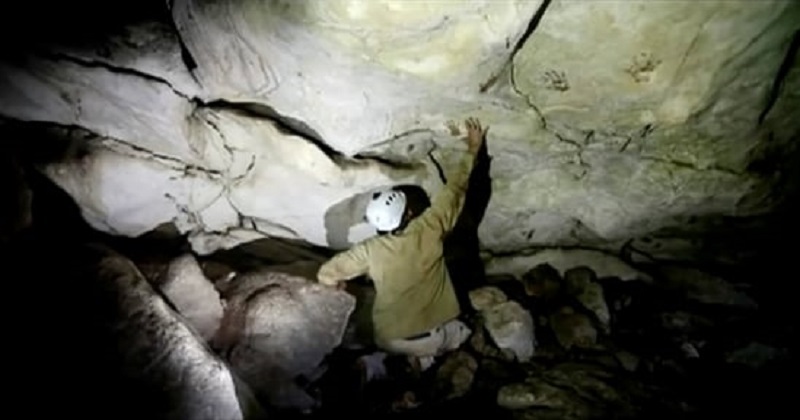
According to an archeologist who has explored and studied the subterranean cavern, dozens of black and red handprints cover the walls of a cave in Mexico, which is believed to be connected with a coming-of-age ritual of the ancient Maya. The cave is located near the northern tip of Mexico’s Yucatan peninsula, where the towering pyramids of urban centers like Uxmal and Chichen Itza still stand, and lies some 33 feet below a large ceiba tree, which the Maya consider sacred.
The 137 prints, more than 1,200 years old, are mostly the hands of children, which would date them near the end of the ancient Maya’s classical zenith when major cities across present-day southern Mexico and Central America prosper amid major human achievements in math and art. The handprints were likely made by children as they entered puberty, due to an analysis of their size, with the colors providing a clue to their meaning, argues Archeologist Sergio Grosjean. “They imprinted their hands on the walls in black… which symbolized death, but that didn’t mean they were going to be killed, but rather died from a ritual perspective. Afterward, these children imprinted their hands in red, which was a reference to war or life,” he said.
Carved face and six painted relief sculptures are other artifacts found in the cave which date from between 800-1,000 A.D., a time when severe drought struck the region and may have contributed to the classical Maya’s sudden desertion of major cities. The first Mayan settlements date back nearly 4,000 years, there were still large centers when Spanish conquerors arrived in the early 1500s. Several million Maya continue to live in communities scattered across southeastern Mexican states like Chiapas and Campeche, in addition to Guatemala and Belize.

Post Your Comments